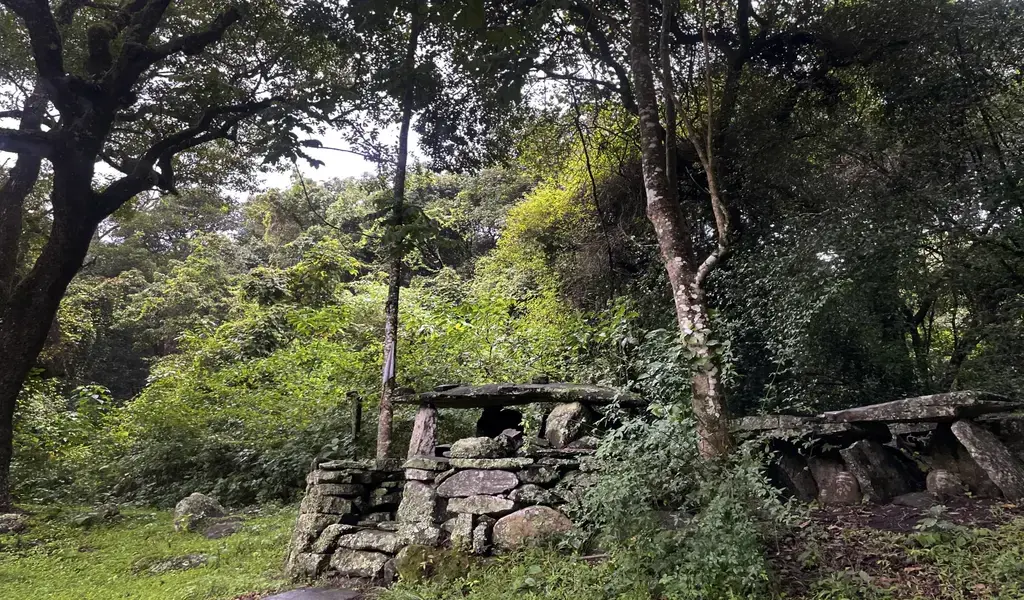Uncategorized
What Are Sacred Forests? – Restrictions, Permissions & Various Categories

For centuries, various religious communities across the globe have preserved sacred forests and groves as sanctuaries for the spiritual and divine.
These ancient woodlands have endured, such as the church forests found in the highlands of Ethiopia, the revered hillside groves cherished by Catholics in Italy, and the woodlands held sacred by Shinto practitioners in Japan, as well as Indigenous communities in Siberia, Australia, the Americas, and India.
Not only do these sacred forests hold immense religious significance, but they also serve as invaluable repositories of biodiversity. Often, they are the last refuge for plant and animal species that have become rare or even extinct in other parts of these regions.
However, the sanctity of these sacred spaces is now under threat from climate change, pollution, and urbanization.
Recognizing the importance of these areas, environmentalists, faithful caretakers, and governments are joining forces to safeguard and protect these invaluable ecosystems for future generations.
Why are forests considered sacred in various parts of the world?
Forests hold a sacred status in many regions due to the belief that they serve as a spiritual connection for the local communities. These areas are often situated in hilly landscapes where deities are believed to reside.
Not only are the trees, rivers, plants, animals, and stones within these forests considered sacred, but they are also associated with specific events and are often found surrounding places of worship or ancestral shrines.
What are the restrictions and permissions in a sacred forest?
Sacred forests typically have strict regulations that prohibit certain activities and restrict access to specific communities. Hunting, gathering, wood cutting, cultivation, and other actions may be strictly forbidden within these spaces.
In fact, even the slightest actions such as breaking a twig or plucking a leaf or flower are deemed unacceptable in many sacred forests.
For instance, Selvi Nanji, a member of the Kurumba tribe, takes care of Banagudi Shola, a sacred forest located in Kotagiri in the Nilgiris Hills of southern India.
According to Nanji, the worship spaces and temples within the forest are usually restricted to male members who perform rituals and maintain the shrines. Nanji, who currently resides in Sweden, authored a book called “Devasolai,” which translates to “sacred forest” in Kurumba.
In Banagudi forest, it is forbidden to enter holy shrines while wearing footwear. However, in some forests, people are allowed to collect fallen timber or fruit, as well as gather honey, medicinal plants, and wood for cremation purposes.
What are the distinctions between Indigenous rituals and practices?
The Indigenous rituals and practices in India, specifically those of the Kurumbas, differ from Hindu traditions. While the majority of India follows Hinduism, the Indigenous community maintains distinct religious practices.
Instead of offering coconuts and bananas to deities like in Hindu rituals, Indigenous traditions involve utilizing resources found in the forest, such as resin from trees.
Additionally, rather than using fabric, plants are used to adorn the deities.
The Kurumbas also perform sacred rituals annually, coinciding with agricultural seasons, where an animal, usually a goat, is sacrificed. Furthermore, the Kurumba medicine people gather herbs, roots, and tree bark from the forest for medicinal purposes.
Are there various categories of sacred forests?
Different types of sacred forests do exist. For instance, there is Muttunad Mund near Kotagiri, which holds great significance for the Toda tribe. This grassland serves as the tribe’s spiritual center and is adorned with a conical temple dedicated to the deity Moonbu.
The temple is constructed using stone, cane, and a unique type of grass found in the sacred grasslands.
The annual temple ritual, lasting for a month, involves various activities such as singing, dancing, rituals, and the inclusion of buffalo, which hold sacred importance to the tribe.
During the festival, celebrants partake in a special meal consisting of white rice mixed with buffalo buttermilk and butter.
M. Alwas, the leader of the Nilgiris Adivasi Welfare Association in Kotagiri, a non-profit organization dedicated to assisting tribes in the area, highlights the challenge of engaging the younger generation in preserving their cultural heritage.
Alwas, who belongs to the Toda tribe, emphasizes that each community possesses its own traditional knowledge and stories that explain the significance of forests, rivers, and trees.
Alwas expresses concern that as interest in preserving faith traditions diminishes, these stories and practices may be lost, along with the value of these sacred spaces.
While some individuals worry that tourism may commercialize these forests, others, like Nanji, believe that ecotourism, if implemented correctly, could have positive effects.
Nanji suggests that it could help outsiders appreciate the importance of sacred groves and create job opportunities in the region. Additionally, she believes that promoting local food could give traditional agriculture a much-needed boost.
RELATED NEWS:
Japan Airlines Appoints Mitsuko Tottori As First Female President Following Fatal Collision
Spirit Airlines Faces 17% Stock Decline As U.S. Judge Blocks $3.8 Billion Merger
Ramadan 2024: Expected Start Date, Fasting Hours And Traditions Across The Globe







